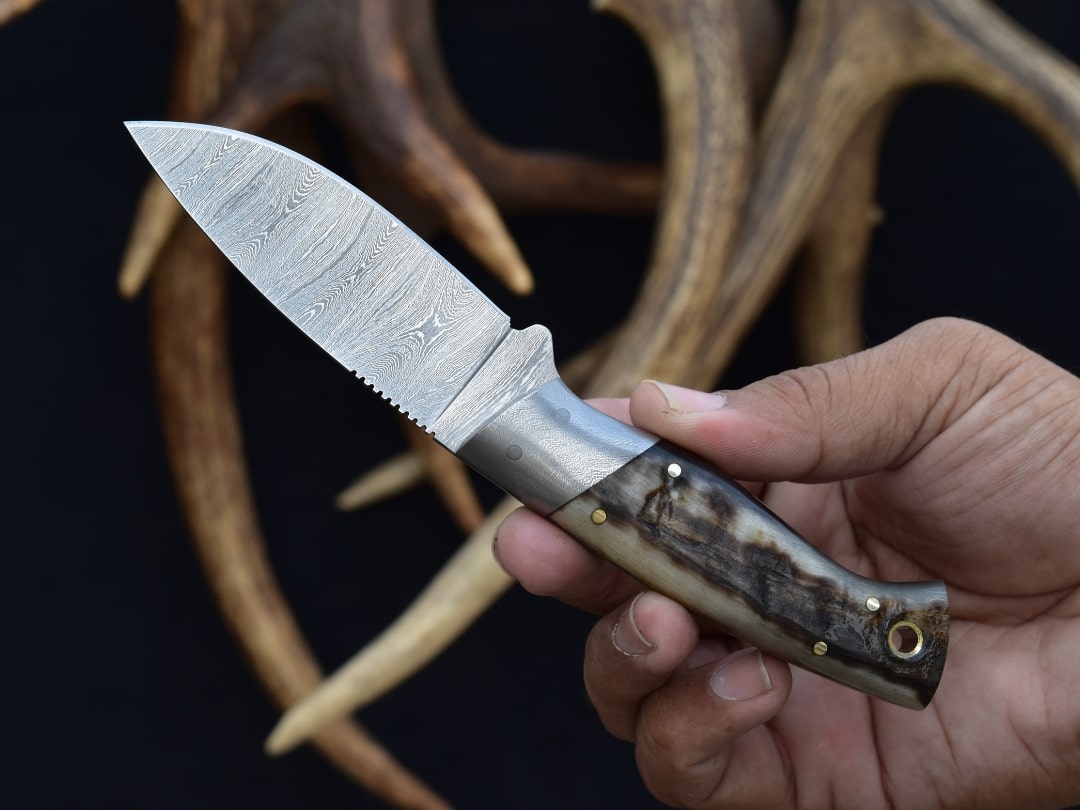In the bustling world of a professional kitchen, the efficiency and precision of every tool can significantly impact the quality of the culinary creations produced. Among these tools, knives hold a place of paramount importance. As a kitchen professional, understanding blade honing techniques is not just a skill but a necessity to maintain the sharpness and effectiveness of your knives.
The art of honing a blade is often misunderstood. While sharpening removes material from the blade to create a new edge, honing is about maintaining the edge. This subtle difference can transform the way you approach your knife maintenance routine. Lets delve into the intricacies of blade honing and explore the techniques that can keep your kitchen knives performing at their best.

Understanding the Importance of Honing
Honing is a crucial step in knife maintenance that ensures your blades remain sharp between sharpenings. Over time, the edge of a knife blade bends or folds over with use. Honing realigns these edges, allowing for a clean cut without the need for frequent sharpening. This process is vital for kitchen professionals who rely on their knives to perform consistently.
Regular honing can extend the life of your knives. It reduces the need for sharpening, which removes material from the blade. Honing, on the other hand, is a gentler process that preserves the knife's metal, ensuring it remains in optimal condition for longer periods.
Essential Tools for Honing
To master blade honing techniques, you'll need the right tools. The most common tool for this purpose is a honing rod, which is typically made from steel, ceramic, or diamond-coated material. Each type has its benefits:
Steel Honing Rod
A steel honing rod is the most traditional choice. Its effective for realigning the blade's edge and is often included with knife sets. It's suitable for most kitchen knives and is a staple in many professional kitchens.
Ceramic Honing Rod
Ceramic rods are harder than steel and can also perform light sharpening while honing. They are ideal for maintaining a very sharp edge and are gentle on the blade.
Diamond-Coated Honing Rod
For those seeking a dual-purpose tool, a diamond-coated honing rod offers both honing and sharpening. The diamond surface is abrasive enough to sharpen the blade while realigning the edge.
Step-by-Step Honing Process
Mastering the technique of honing involves a few simple steps. Heres a detailed guide to help kitchen professionals hone their knives effectively:
Step 1: Preparing the Honing Rod
Hold the honing rod vertically with the tip resting on a stable surface. Ensure the rod is secure and wont slip during the honing process.
Step 2: Positioning the Knife
Hold the knife at a 15-20 degree angle against the honing rod. This angle is crucial for effective honing and should be maintained consistently throughout the process.
Step 3: Honing the Blade
Starting at the base of the knife blade, gently slide the blade down the rod, moving from the base to the tip. Apply light pressure and ensure the entire edge of the blade makes contact with the rod.
Step 4: Alternating Sides
Repeat the process on the opposite side of the blade. Alternate sides for about 5-10 strokes per side. This ensures both edges are evenly honed.
Common Mistakes to Avoid
While honing is a straightforward process, there are common mistakes that can impact the effectiveness of your technique:
Incorrect Angle
Maintaining the correct angle is vital. An angle thats too steep or too shallow wont effectively hone the blade, leading to unsatisfactory results.
Excessive Pressure
Applying too much pressure can damage the blade. Light, consistent pressure is sufficient for honing.
Skipping Honing
In the fast-paced environment of a professional kitchen, its easy to skip honing in favor of sharpening. However, regular honing can reduce the frequency of sharpening, preserving the knifes edge.
Advanced Honing Techniques
For those seeking to refine their blade honing techniques, exploring advanced methods can be beneficial:
Using a Leather Strop
A leather strop can be used post-honing to polish the blade and remove any remaining burrs. This enhances the sharpness and provides a smooth, clean cut.
Freehand Honing
Freehand honing involves honing without a rod, using a flat surface. This technique requires practice but offers greater control for experienced professionals.
Conclusion
For kitchen professionals, mastering blade honing techniques is crucial for maintaining knife efficiency and precision. Understanding the nuances of honing, selecting the right tools, and practicing regularly can significantly enhance the performance of your kitchen knives. To learn more about different types of knives and their maintenance, you can visit this comprehensive guide on knife types. For more specific insights into knife sharpening, check out this article on sharpening techniques.

FAQ
Why is honing important for kitchen knives?
Honing maintains the knife's edge, ensuring sharpness and reducing the need for frequent sharpening, thus extending the knife's life.
How often should I hone my kitchen knives?
Generally, you should hone your knives before each use. This keeps the blade in optimal condition for professional kitchen tasks.
Can honing replace sharpening?
No, honing cannot replace sharpening. While honing maintains the edge, sharpening is necessary when the blade becomes dull and needs a new edge.
This article contains affiliate links. We may earn a commission at no extra cost to you.


























